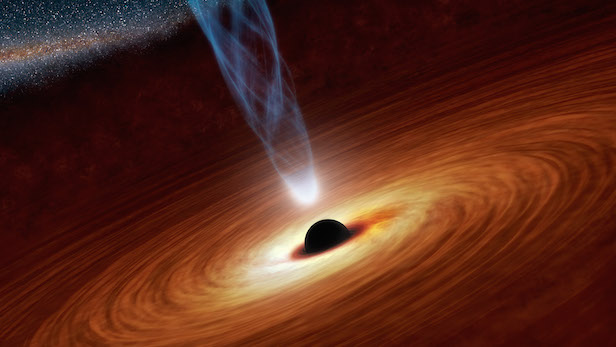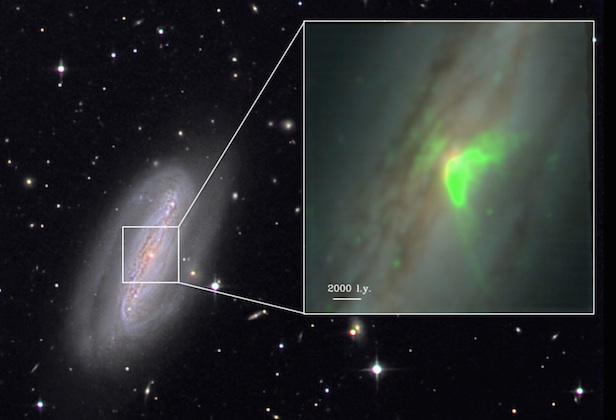Galactic nucleus discovered to be ‘heavily obscured’
The nucleus of NGC 7582 is obstructed by gas and dust, but how does this occur?

An AGN has always been a mystery for astronomers, but we find new evidence of its behaviour constantly. Image credit: NASA/JPL-Caltech
When astronomers looked closely at the centre of the nearby galaxy NGC 7582, they saw that its high-energy jet, emitted from the central black hole, was misshapen. This must mean the Active Galactic Nucleus (AGN) is enveloped in a revolving halo of gas and dust, distorting the jets.
It is a commonly accepted theory that at the centre of a massive galaxy, like our Milky Way, is a supermassive black hole. This high-gravity monster continuously accretes mass from surrounding gas and dust; this region is called a ‘torus’. As the AGN feeds from the torus, energy is violently ejected in the form of X-ray jets from either end of the black hole.
When astronomers at National Optical Astronomy Observatory (NOAO) observed the nearby galaxy NGC 7582, they found the jet had been constricted by what seems to be a rotating ring of gas and dust 2000 light years across. Now this could be the surrounding torus, but it could also not be. The results are showing that this highly obscured black hole could have occurred in more than one way.

The green streams at the centre of the galaxy represent the irregular, hot, ionized jets propelled from the AGN. Image credit: Capella Observatory/NAOA
The first instance is the torus, but it must be extremely compact. In fact, it must be only a few light years across, causing the black hole to distort the X-ray jets. Lisa Kewley of the Australian National University College of Physical and Mathematical Sciences, explains the other scenario: “The obscuring ring may result from the merger of the galaxy with a much smaller companion, perhaps ten times less massive. Simulations of such ‘minor mergers’ can produce rings embedded in an otherwise normal-looking galaxy.”
Understanding how these black holes become so heavily obscured can help us understand central supermassive black holes and how they evolve. As the team NOAO continue to investigate other extremely obscured AGNs, the nature of their occurrence will soon become clear.
Keep up to date with the latest space news in All About Space – available every month for just £4.99. Alternatively you can subscribe here for a fraction of the price!




